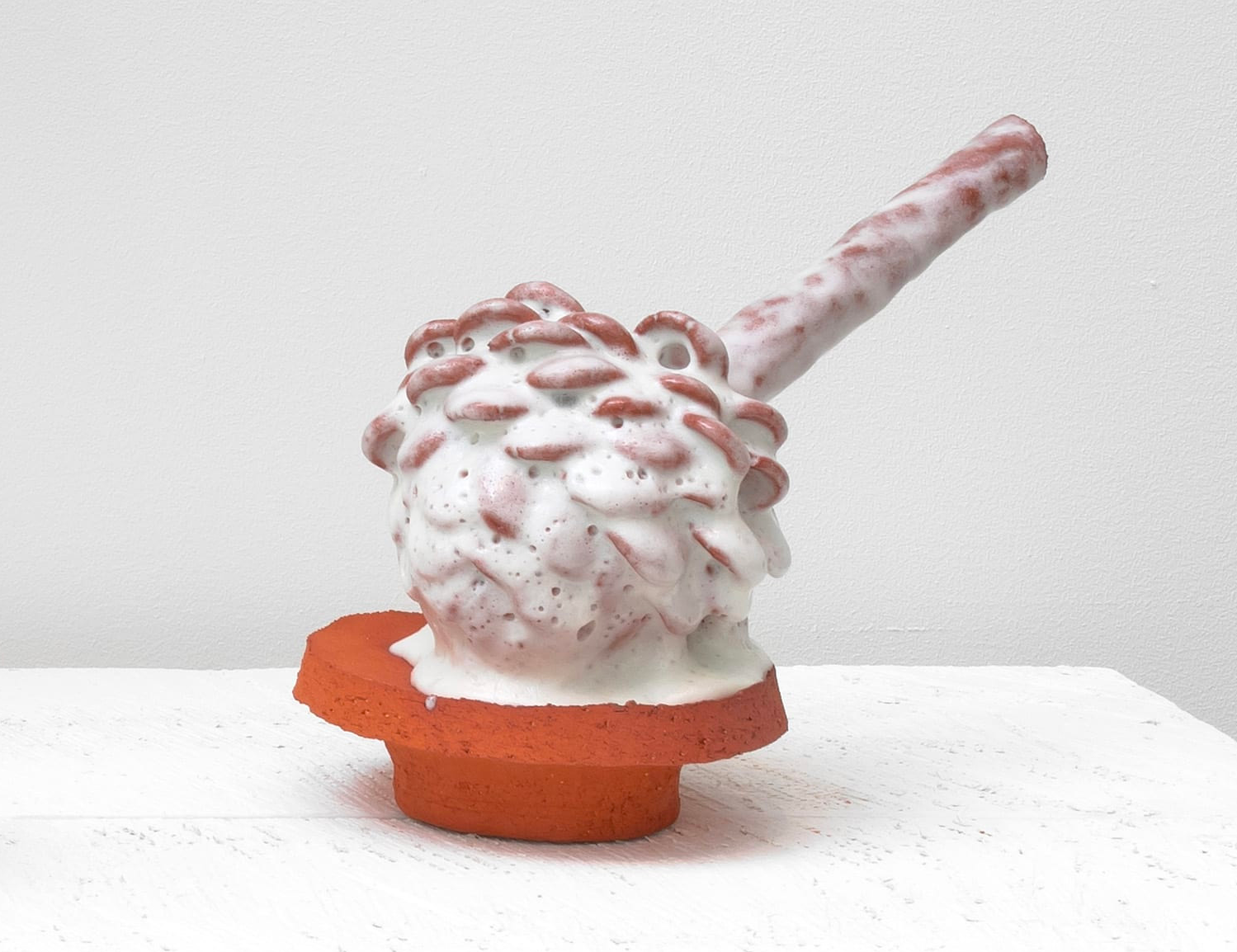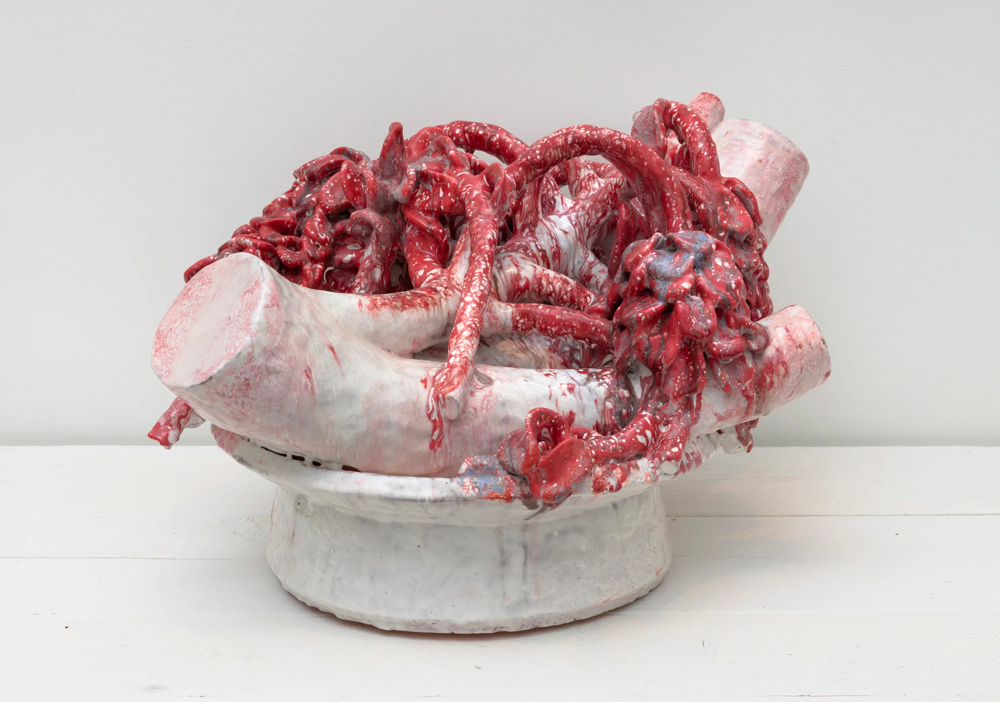Central Valley ceramicist David Hicks doesn’t have a big footprint in Los Angeles. To see his work, you have to drive out to a hospital in Sylmar: a sun-parched, semi-rustic neighborhood at the northernmost tip of Los Angeles. There, above the lobby welcome desk, once stretched a multitudinous terra cotta thicket (stubby branches and succulent buds, fiddleheads and pinecones), glazed in a blithe, eye-popping palette and configured on thin metal armatures. Imagined as a beacon for a sterile setting, Hicks’ Construction (Bloom Field) (2016) has since been moved to an adjacent building, crammed with desks and hospital gurneys. Visitors today can only glimpse it through a side window, a gesture, perhaps, to the existential anguish of the present moment.
“Seed,” Hicks’ exhibition of sculpture and drawings at Diane Rosenstein Gallery, is more inward-looking, probing the mimetic properties of organic forms we tend to overlook. Inspired by his drives through Visalia, California (the source of much of our food supply), Hicks turns his observations of large-scale mechanized agriculture into raw, personal reflections on time and sacrifice. This theme suffuses the sumptuous masses that Hicks labels “Offerings”: luxuriant heaps of shoots, tendrils, branches and blossoms piled up to four feet in height and lavished with syrupy glaze. While they are steeped in solemn presence, drawing resemblances to burial mounds, Hicks withholds an explanation. Offerings to whom? For what? Are they signs of thanksgiving or penance?

David Hicks, Clipping (White Bloom) (2020). Photo by Robert Wedemeyer, courtesy Diane Rosenstein Gallery
The Offerings’ commanding, maximalist presence throws smaller, sparer forms into relief––Hicks calls them “Clippings”––presented, altar-like, on self-hewn tables throughout the gallery. While each Clipping depicts what its title promises—a pine cone, a bulb, a coil of leaves—they are scaled, glazed and abstracted to a degree that they share morphological likenesses with organs. Clipping (Red Vine) (2017) represents a morass of scandent vegetation at the end of its flower, draped extravagantly over a fossilized branch. Doused in red glaze, which bleeds messily onto the bone-colored surfaces, the vines resemble tangled intestines.
Memento mori come to mind, but not in a traditional sense. Firing clay triggers transformations––it desiccates, it hardens, it becomes impervious to the elements––that mirror the aging process. So too does firing glaze, which often becomes the subject matter. The thick white treacle pooling and dribbling off of a red terracotta dish transforms Clipping (White Bloom) (2020), a simple branch, into a well-worn anointing spoon steeped in ambrosial substance. The crusted pigment on Clipping (Blue Green Clusters) (2020), the result of thick application and multiple firings, armors a vegetal form with calloused rhinoceros skin. These colors and textures are timestamps: diaristic records of hours logged alone in the studio at the expense of other activites. They are reminders of the sacrifices made in exchange for shots at uncovering the essential.


